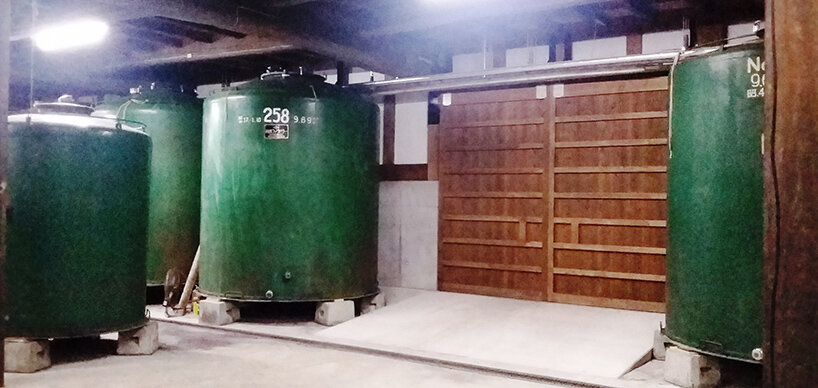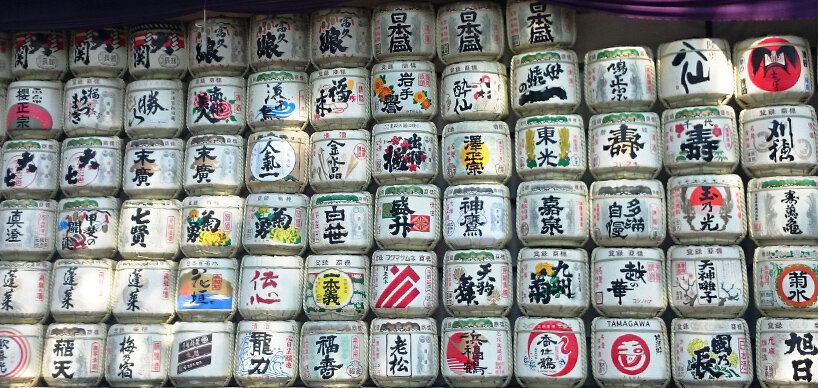Sake - Japan's Purity in a Bottle

Is it wine? Is it beer? Or perhaps liquor? It's simply Sake – because the famous Japanese beverage made from rice is unique. It has been consumed for a long time, well before our era, and has not lost its popularity since. In Japan, it holds a firm place in everyday life, social gatherings, and religion. Now, we too can uncover the mystery of what makes the sacred Japanese rice wine.
Rice wine at the end of the day
When the office lights go out in the evening in Japan, groups of colleagues flock to the Izakayas - traditional Japanese pubs. In these establishments, they are allocated a separate room, where everyone kneels before a low table on tatami mats and first cleans their hands with obligatory moist towels. Then, drinks are ordered – with Sake leading the way. The name of this establishment already includes the popular rice wine: Sakaya means "Sake Shop", and the initial i stands for "sit."

By the way, the correct emphasis for the word "Sake" is on the last syllable, unlike what we are accustomed to. In Japan, however, it is more commonly referred to as 日本酒 Nihonshu – "Japanese alcohol," distinguishing it from beer, Shochu (Japanese distilled spirits), cocktails, and wine, which are also available in the Izakaya. The last character 酒 can mean both alcohol in general and specifically Sake.
With rice wine, there are small snacks, offering a wide variety. Visitors often prefer ordering items such as green Edamame beans, fried chicken (Karaage), Tsukemono – pickled Japanese vegetables – and various tofu variations. Complete meals are also available in the Izakaya; however, in Japan, it is customary to share all the food on the table. Another aspect of table etiquette is that you should never pour for yourself – this is usually done by the highest-ranking person at the table or colleagues pouring for each other.
The best sake for the dining table
If you want to enjoy Japanese rice wine at home, you have the choice between various types and qualities. You can get the rice wine in small cans with 180 ml content, in 720 ml bottles, or in large bottles of 1.8 liters each. You don't have to spend much for a Japanese Sake that tastes good: For around 6 euros for a 720 ml bottle, you can already purchase a good Japanese Sake. The Ginjo and Daiginjo varieties are considered the finest and can cost up to 45 euros. The price is usually proportional to the quality.
In many varieties of Japanese rice wine, distilled alcohol is added to round out the taste and make it more aromatic. There are five variations based on the amount of alcohol added and how thoroughly the rice is polished for production:
- Junmai is pure Sake without additional alcohol, rich in flavor with a slight acidic note
- In Honjozo, you find a little distilled alcohol and at least 30% well-polished rice. This cheaper, light variety still has a pronounced aroma
- For Ginjo, the rice must have at most 60% of its original size. Ginjo tastes light and aromatic but still complex
- Daiginjo contains even 50% polished rice and is even richer and more fragrant than Ginjo
- Junmai-Ginjo and Junmai-Daiginjo each contain no additional alcohol
- Namazake, on the other hand, is unpasteurized, one of the aforementioned variations, with a correspondingly fresh taste
On the bottle, it is always indicated how much the rice grains were polished for the Sake. The lower the percentage, the finer it is considered. Even for the Junmai varieties, you often have to spend a bit more. Another factor for quality is the effort put into production: Careful filtering and strict control of fermentation temperature, for example, take time. But what else is involved in ensuring good quality?
Wine that is brewed

In Japan, Sake is, of course, more than just a beverage. This becomes apparent when you look at the breweries: At the entrance, you'll find small shrines and religious Shinto paper decorations. The brewery itself is considered a sacred place and is accordingly respected.
In Japan, brewing only takes place in winter. This is due, on the one hand, to the surprising scarcity and costliness of rice in Japan: The government prohibits the import of rice to support local farmers. On the other hand, the temperature between September and March is ideal for exposing the popular drink to as few germs and bacteria as possible.
Despite the common designation, the production process bears little resemblance to wine and typically takes 50 to 60 days. Carefully washed and polished rice is first steamed in water, which must exclusively come from natural sources. Subsequently, a type of mold called Koji is introduced, which is supposed to convert the starch in the rice into glucose over approximately three weeks. The Koji is loosened by hand and filtered using fabric. It is then mixed with yeast and lactic acid, creating a new mixture called Shubo. From this mixture, Amazake is later produced – sweet rice wine that can be consumed before the fermentation process begins. This step closely resembles the brewing of beer.
The mixture initially ferments in smaller fermentation tanks while the temperature is continuously monitored. After two weeks, the Shubo is transferred to larger tanks, where it ferments for several more days before being pressed into Sake. Most varieties of rice wine are pasteurized before bottling and are stored in tanks for another six months to a year until they reach their optimum maturity.
The art of sake enjoyment
When fresh from the tank, Japanese rice wine contains approximately 20% alcohol, but before bottling, it is diluted with water. This brings the alcohol content to 14 – 16%, still stronger than regular wine. Despite its strength, it is advisable to consume it within a year of purchase. It retains its best flavor when stored, similar to wine, in a cool and dark place. Once opened, it should be refrigerated and consumed within one to two days. On the other hand, fresh Namazake is exclusively stored in the refrigerator.
In Japan, it is not typically consumed from just any glasses. For an authentic experience, complete sets called Shuki are popular. One can choose between small wooden cups, Choko (porcelain containers), or rectangular boxes made of wood or lacquerware – Masu. Masu is usually used for measuring rice and can be filled directly or serve as a support for the cup. Bowl-like, shallower containers called Sakazuki are also common.
If you want to serve the rice wine correctly, it should not be poured directly from the bottle but from porcelain vessels called Tokkuri. This requires the use of both hands: one hand firmly holds the vessel, while the other supports it from below. Similarly, when drinking, one holds the cup in the same manner.
Rice wine goes with (almost) every meal
Whether with food or without: Rice wine is very versatile and can be enjoyed in various ways. It pairs well with surprisingly many dishes, especially lighter ones, and they don't even have to be Japanese. To make the most of the rice wine, one should only consider the available aroma:
- Fruity and aromatic: pairs best with smoked dishes
- Sweet: complements savory, acidic dishes such as fish or pickled vegetables
- Dry: complements acidic dishes like caviar
- Tangy: pairs perfectly with dishes containing a lot of oil or butter
- Fresh and light: is best enjoyed with sashimi
- Structured: complements tofu or oysters

A gift for the gods
In Japan, rice wine is not only found at celebrations and in pubs: It is also the preferred drink for offerings and other ceremonies. For example, at weddings, the bride and groom exchange glasses of Sake to seal their union. This is mainly because it is considered pure in a spiritual sense. Before the existence of tools for milling rice, it was pre-chewed – and only by virgins, to maintain purity.

In Japan, rice wine is not only found at celebrations and in pubs: It is also the preferred drink for offerings and other ceremonies. For example, at weddings, the bride and groom exchange glasses of Sake to seal their union. This is mainly because it is considered pure in a spiritual sense. Before the existence of tools for milling rice, it was pre-chewed – and only by virgins, to maintain purity.

However, there is no need for a spiritual or significant occasion to enjoy Japanese rice wine. With its diversity of varieties and flavors and its harmony with most dishes, the sacred drink of Japan can be enjoyed in the comfort of your own home. Kanpai – Cheers!
Here you can find authentic Japanese Sake: Sake Kontor Berlin















-from-the-yakiyaki-grill-pan.jpg)




